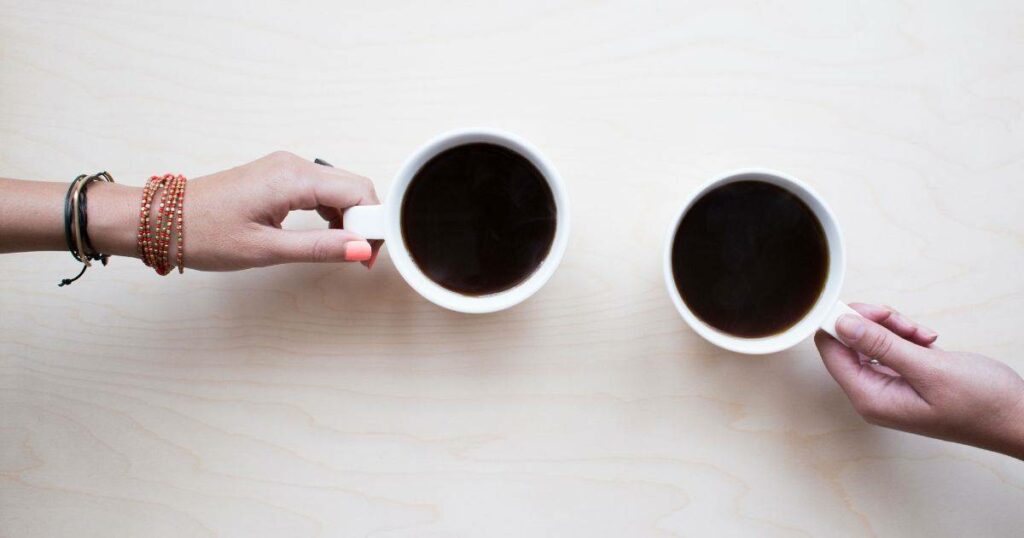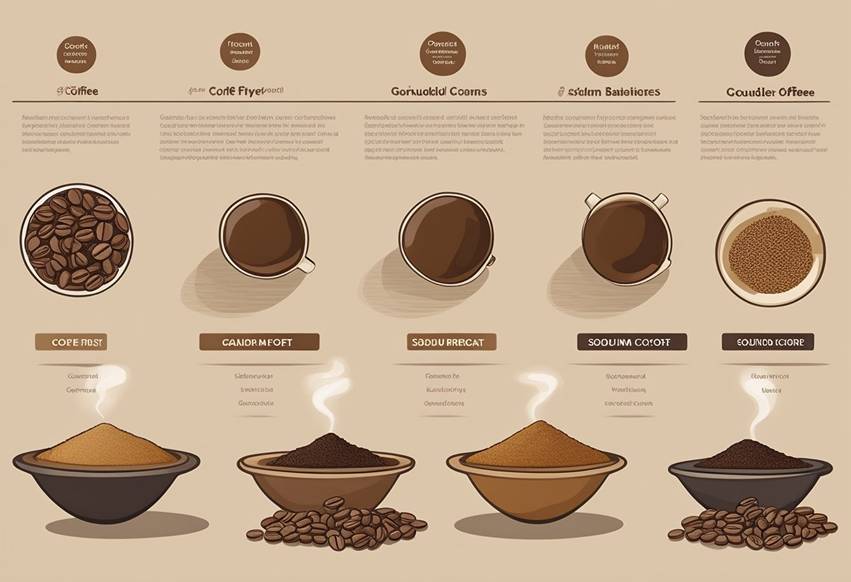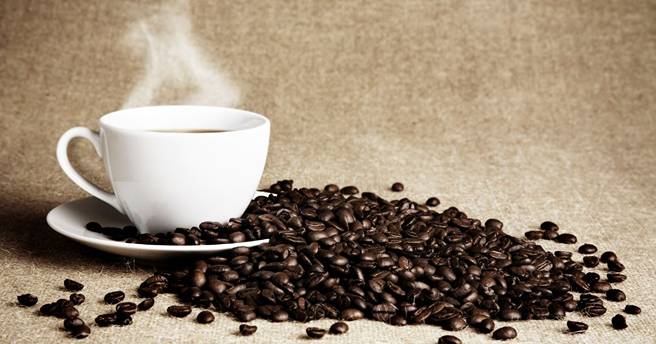Many people enjoy a cup of coffee, but have you ever considered its sodium content?
The topic of sodium in coffee may seem insignificant, but it’s worth discussing, particularly for those who consume coffee daily and are mindful of their sodium intake.
Understanding the sodium content in coffee can help you make informed decisions about your daily beverage choices.

Coffee itself does not contain a substantial amount of sodium. However, sodium content can vary depending on the types of coffee drinks consumed.
For instance, you’ll find varying levels of sodium in coffee products like lattes, cappuccinos, or macchiatos, which contain milk that contribute to sodium content.
Knowing the sodium levels in these beverages and considering the potential health implications is something that should not be overlooked.
Key Takeaways
- Coffee has negligible sodium content, but sodium levels vary among different coffee types
- Consuming coffee beverages with added milk can increase the sodium intake
- Being mindful of sodium in coffee drinks helps maintain a balanced diet, especially for daily coffee drinkers
Does Coffee Have Sodium

Coffee Beans and Sodium
Coffee is a popular beverage enjoyed by millions around the world for its rich flavor and energizing effects.
You may be wondering about the sodium content in your daily cup of coffee.
The answer to this question largely depends on the coffee beans and the brewing process.
Coffee beans themselves contain very little to no sodium.
The mineral content in coffee beans is mostly composed of potassium and magnesium, with no significant amount of sodium present.
However, the water you use to brew your coffee can affect its sodium content.
Depending on the source of the water, trace amounts of sodium may be present.
For example, if you use tap water with a higher sodium content, your cup of black coffee might have a small amount of sodium.
While black coffee contains minimal amounts of sodium, additional ingredients such as milk and sugar can affect the overall sodium content.
For instance, one cup of whole milk has 120 mg of sodium, while reduced-fat, lower fat, and fat-free milk each contain roughly 130 mg.
If you enjoy your coffee with milk, such as in cappuccinos, lattes, and macchiatos, you should be aware of the added sodium from these dairy products.
When it comes to your overall nutrition, the sodium content in black coffee contributes only a small amount to your daily sodium intake.
However, it is important to keep in mind that consuming excessive amounts of caffeine can have other impacts on your health.
So, while coffee can be a part of a balanced diet, be mindful of your caffeine consumption and consider the sodium content of any additional ingredients you add to your coffee.
Sodium Content in Different Coffee Types

Instant Coffee and Sodium Levels
Instant coffee is a convenient and quick alternative to brewed coffee.
However, it is important to note that instant coffee may contain more sodium than brewed coffee due to the manufacturing process.
Depending on the brand and the processing method, sodium levels can vary.
It is always a good idea to check the nutritional label on your instant coffee to know the exact sodium content.
Brewed Coffee’s Sodium
A typical 8-ounce cup of brewed coffee contains a rather small amount of sodium, averaging around 5 mg.
The actual sodium content in brewed coffee may vary based on factors such as the type of coffee bean used and the sodium levels in the water you use for brewing.
Arabica beans usually have slightly lower sodium levels compared to Robusta beans.
Espresso and Specialty Drinks Sodium Information
Espresso on its own, like coffee, does not contain any significant sodium content.
However, specialty drinks such as cappuccinos, lattes, and mochas contain various amounts of milk, which does have some sodium content.
One cup of whole milk has 120 mg of sodium, while reduced-fat, lower-fat, and fat-free milk each contains 130 mg.
Since these drinks differ in milk content, their sodium levels also differ.
For instance, here’s a brief comparison of sodium content in popular specialty drinks:
- Cappuccinos typically contain equal parts espresso, steamed milk, and foam, leading to a moderate sodium content coming mainly from the milk.
- Lattes have more steamed milk compared to cappuccinos and usually contain less foam, resulting in slightly higher sodium content than cappuccinos.
- Mochas often contain added chocolate syrup, contributing an extra amount of sodium in addition to the sodium present from the milk.
Beware of limited edition or seasonal specialty drinks, like a white chocolate mocha or salted caramel cream cold brew, as their sodium content can be significantly higher due to added syrups, flavors, and toppings.
Keep in mind that adding cream or sugar to your coffee can also contribute sodium.
Packaged creamers, especially flavored ones, may have higher sodium levels.
Certain types of sugar, like table salt or rock salt, might contain sodium as an anti-caking agent.
It’s crucial to pay attention to the ingredients you use in your coffee to manage your sodium intake.
Health Considerations of Sodium in Coffee

Coffee Consumption and Blood Pressure
Drinking coffee in moderate amounts has been found to place minimal impact on your blood pressure.
However, of course, consuming large quantities of coffee can lead to a temporary increase in blood pressure, particularly for those who already suffer from high blood pressure thing.
It is crucial to keep your daily coffee consumption in check for maintaining good heart health.
If you have concerns about your blood pressure and coffee consumption, consult your healthcare professional for personalized advice.
Recommended Daily Sodium Intake
For maintaining a balanced diet, it is recommended that you limit your daily sodium intake to 2,300 milligrams (mg) per day.
Some experts advise an even lower intake (1,500 mg) for people with high blood pressure, heart disease, or kidney problems.
An 8-ounce cup of brewed coffee contains only about 5 mg of sodium, which is negligible in comparison to the other sources of sodium in your daily diet.
Keep in mind that adding certain ingredients, like milk or packaged creamers, can increase the sodium content of your coffee.
Low-Sodium Coffee Options
If you are on a low-sodium diet or simply looking for ways to reduce your sodium intake, try these sodium coffee options:
- Black Coffee: Brew your coffee without added ingredients like milk or creamers. This way, you will only consume the naturally low levels of sodium present in coffee beans.
- Plant-based Milk: Swap dairy milk with plant-based alternatives like almond, soy, or oat milk, which usually have lower sodium content.
- Skip the Processed Additives: Avoid using pre-packaged creamers and flavored syrups, as they can have high sodium levels. Opt for natural sweeteners like honey or stevia instead.
| Coffee Type | Sodium Content (per 8 oz) |
|---|---|
| Black Coffee | 5 mg |
| Espresso | 0 mg |
| Instant Coffee | 5 mg |
| Decaffeinated Coffee | 5 mg |
| Flavored Coffee (varies) | Varies |
Conclusion
When considering the sodium content in our daily food and drink intake, coffee is an item that often goes under the radar. It may come as a surprise to many, but yes, coffee does contain sodium.
However, the amount is minimal, making it much less of a concern compared to other foods and beverages we consume on a daily basis.
In a plain 8 ounce (approximately 237 milliliters) serving of brewed coffee, there’s only a negligible amount of sodium, which contributes very little to the daily value recommended by health organizations.
It’s important to remember that the sodium count can increase depending on what is added to the coffee.
Common additions like milk, creamer, flavored syrups, or even a teaspoon of table salt (for those who prefer their coffee a bit salty), can push the sodium value higher.
Therefore, while plain coffee itself is not a significant source of sodium, the additives can change the nutritional profile of your next cup substantially.
For individuals monitoring their sodium intake for health reasons, coffee can still very much be a part of a low-sodium diet, provided it’s consumed in its plain form or with low-sodium additives.
This highlights the importance of being mindful of not just the primary food or drink but also the extras that go into it.
In conclusion, while coffee inherently contains sodium, the amount is typically low, making it a safe choice for most.
However, being aware of and moderating the additions that can hide extra sodium is key to ensuring that your coffee habit does not inadvertently contribute to an excessive sodium intake.
Always consider the broader context of your overall diet to maintain a healthy balance of nutrients, including sodium.
Frequently Asked Questions

What is the sodium content in black coffee?
Black coffee contains a very low amount of sodium. According to the USDA, an 8-ounce cup of brewed coffee contains only about 5 mg of sodium.
It is essential to note that the sodium content of coffee can vary, but generally, it remains insignificant in black coffee.
How does decaffeination affect the sodium content in coffee?
Decaffeination does not necessarily affect the sodium content in coffee.
The process mainly focuses on removing caffeine from the coffee beans, and any possible changes in sodium content would be minimal and negligible.
Can consuming coffee with milk significantly affect its sodium levels?
Yes, adding milk to coffee can increase its sodium content.
One cup of whole milk has 120 mg of sodium, while reduced-fat, low-fat, and fat-free milk each contain 130 mg.
As the amount of milk added varies in cappuccinos, lattes, and macchiatos, so does the sodium content in such coffee beverages.
Are there differences in sodium content between instant and brewed coffee?
There are some differences in sodium content between instant and brewed coffee. In general, instant coffee tends to have more sodium than brewed coffee.
For example, instant coffee may contain up to 20 mg of sodium per serving, while an average 8-ounce cup of brewed coffee contains around 11 mg of sodium.
Is coffee consumption advisable for individuals on a low sodium diet?
Given the low sodium content in black coffee and regular brewed coffee, it can be considered safe for individuals on a low sodium diet.
However, it is important to take into account any added ingredients, such as milk or flavored syrups, that may increase the sodium content.
Similarly, instant coffee has higher sodium levels, so it would be better to opt for brewed coffee when following a low sodium diet.
Could drinking coffee potentially influence blood pressure due to sodium?
The sodium content in coffee is generally too low to have any significant influence on blood pressure.
However, caffeine, another component of coffee, can have a short-term effect on increasing blood pressure.
It is always best to monitor individual reactions to caffeine and consult a healthcare professional if you have concerns about coffee consumption and blood pressure.

